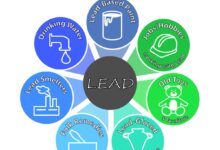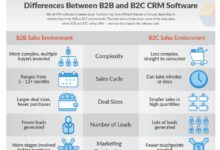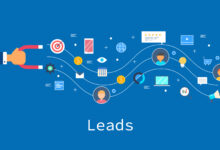Crm Lead Nurturing: 7 Powerful Strategies to Skyrocket Conversions
Ever wondered why some businesses turn leads into loyal customers effortlessly? The secret lies in smart CRM lead nurturing. It’s not just about sending emails—it’s about building trust, delivering value, and guiding prospects with precision.
[ez-toc]
What Is CRM Lead Nurturing and Why It Matters

CRM lead nurturing is the strategic process of building relationships with potential customers throughout their buyer’s journey. Instead of pushing for a sale immediately, businesses use Customer Relationship Management (CRM) systems to deliver personalized, timely, and relevant content that educates and engages leads.
The Evolution of Lead Nurturing
Lead nurturing isn’t a new concept, but its execution has evolved dramatically. In the past, sales teams relied on cold calls and generic follow-ups. Today, with advanced CRM tools like Salesforce and HubSpot, companies can automate and personalize interactions at scale.
- 1990s: Manual follow-ups and paper-based tracking
- 2000s: Introduction of CRM software for contact management
- 2010s: Rise of marketing automation and email workflows
- 2020s: AI-driven personalization and omnichannel engagement
This evolution has made CRM lead nurturing not just efficient, but essential for modern sales success.
Why CRM Is the Backbone of Effective Nurturing
A CRM system acts as the central hub for all customer data. It stores interactions, tracks behavior, and enables segmentation—making it possible to deliver hyper-relevant messages. Without a CRM, lead nurturing becomes disjointed and ineffective.
“A CRM doesn’t just manage contacts—it transforms random interactions into meaningful relationships.” — MarketingProfs
By integrating sales, marketing, and customer service data, CRMs provide a 360-degree view of the lead, allowing teams to anticipate needs and respond proactively.
How CRM Lead Nurturing Boosts Sales Conversion
One of the most compelling reasons to invest in CRM lead nurturing is its direct impact on conversion rates. Studies show that nurtured leads make 47% larger purchases than non-nurtured leads (MarketingSherpa). But how exactly does this happen?
Building Trust Over Time
People don’t buy from companies they don’t trust. CRM lead nurturing allows businesses to establish credibility by consistently providing value—whether through educational content, case studies, or personalized recommendations.
- Deliver content that answers common pain points
- Share customer success stories to build social proof
- Use behavioral triggers to send timely follow-ups
This gradual trust-building process reduces skepticism and positions your brand as a trusted advisor.
Shortening the Sales Cycle
A well-nurtured lead is more informed and closer to a buying decision. CRM systems help identify when a lead is sales-ready by tracking engagement metrics like email opens, website visits, and content downloads.
For example, if a lead downloads a pricing guide after reading three blog posts, the CRM can flag them as high-intent. Sales teams can then prioritize these leads, reducing wasted time on unqualified prospects.
“Companies that excel at lead nurturing generate 50% more sales-ready leads at 33% lower cost.” — Forrester Research
Key Components of a Successful CRM Lead Nurturing Strategy
To maximize the impact of CRM lead nurturing, you need a structured approach. Let’s break down the essential components that make a strategy effective.
Lead Scoring and Segmentation
Not all leads are created equal. CRM lead nurturing starts with categorizing leads based on their behavior, demographics, and engagement level. Lead scoring assigns points for actions like opening emails, visiting pricing pages, or attending webinars.
- High-score leads: Fast-track to sales
- Medium-score leads: Continue nurturing with targeted content
- Low-score leads: Re-engage with reactivation campaigns
Segmentation ensures that a startup founder receives different messaging than an enterprise CTO, even if they’re in the same industry.
Automated Drip Campaigns
Drip campaigns are a cornerstone of CRM lead nurturing. These are pre-written sequences of emails or messages delivered automatically based on triggers like sign-up date, content download, or inactivity.
For instance, a SaaS company might use a drip campaign to:
- Day 1: Welcome email with onboarding tips
- Day 3: Video tutorial on key features
- Day 7: Case study showing ROI
- Day 10: Personalized demo offer
Tools like Zoho CRM and Marketo make it easy to set up and optimize these workflows.
Top 5 CRM Tools for Effective Lead Nurturing
Choosing the right CRM can make or break your lead nurturing efforts. Here are five of the most powerful platforms that combine automation, analytics, and personalization.
Salesforce: The Enterprise Powerhouse
Salesforce is the gold standard for CRM lead nurturing, especially for large organizations. Its Einstein AI capabilities predict lead behavior, recommend next steps, and automate follow-ups.
- Strengths: Scalability, deep integrations, AI-driven insights
- Best for: Enterprises with complex sales cycles
- Key feature: Pardot for B2B marketing automation
Learn more at salesforce.com.
HubSpot: The All-in-One Marketing Machine
HubSpot stands out for its user-friendly interface and seamless integration between CRM, marketing, sales, and service hubs. It’s ideal for small to mid-sized businesses looking to grow.
- Strengths: Free CRM tier, drag-and-drop automation builder, content management
- Best for: Inbound marketing-focused companies
- Key feature: Behavioral email triggers based on website activity
Explore HubSpot at hubspot.com.
ActiveCampaign: The Automation Specialist
If your priority is hyper-personalized automation, ActiveCampaign is a top contender. It goes beyond basic email sequences with conditional logic and dynamic content.
- Strengths: Advanced automation workflows, site tracking, SMS marketing
- Best for: E-commerce and service-based businesses
- Key feature: Predictive sending and win probability scoring
Visit activecampaign.com to learn more.
Personalization: The Game-Changer in CRM Lead Nurturing
Generic messages get ignored. Personalized ones get results. In fact, 72% of consumers only engage with personalized messaging (SmarterHQ). CRM lead nurturing thrives when it feels one-on-one, not one-to-many.
Dynamic Content Based on Behavior
Modern CRMs track user behavior across websites, emails, and apps. This data can be used to serve dynamic content—like showing different email banners based on industry or past purchases.
- Example: A lead who viewed a pricing page gets an email with a limited-time discount
- Tool tip: Use HubSpot’s smart content or Salesforce’s Journey Builder
- Result: 50% higher click-through rates on personalized emails
This level of customization makes leads feel understood, increasing the likelihood of conversion.
Personalized Subject Lines and Timing
Even small personalization touches can have a big impact. Using the lead’s name, company, or location in subject lines boosts open rates by up to 26% (Experian).
But timing matters just as much. CRMs with AI can determine the best time to send emails based on when a lead is most active.
“Personalization isn’t a luxury—it’s the price of entry in today’s market.” — Ann Handley, Chief Content Officer at MarketingProfs
Measuring the Success of Your CRM Lead Nurturing Campaigns
You can’t improve what you don’t measure. Tracking the right metrics ensures your CRM lead nurturing efforts are delivering ROI.
Key Performance Indicators (KPIs) to Track
To evaluate effectiveness, focus on these core KPIs:
- Lead conversion rate: Percentage of nurtured leads that become customers
- Email open and click-through rates: Indicators of engagement
- Time to conversion: How long it takes a lead to move through the funnel
- Customer acquisition cost (CAC): Lower CAC means more efficient nurturing
- Revenue attribution: Which campaigns drove the most sales
Most CRM platforms offer built-in dashboards to monitor these metrics in real time.
A/B Testing for Continuous Improvement
Even the best strategies can be optimized. A/B testing allows you to compare two versions of an email, landing page, or workflow to see which performs better.
- Test subject lines, CTAs, content formats, or send times
- Run tests with statistically significant sample sizes
- Implement winning variations across your campaigns
For example, a simple change from “Get Your Free Trial” to “Start Your 14-Day Trial—No Credit Card Needed” increased conversions by 22% for one SaaS company.
Common Mistakes to Avoid in CRM Lead Nurturing
Even with the best tools, companies often sabotage their own efforts. Here are the most common pitfalls and how to avoid them.
Over-Automating the Human Touch
Automation is powerful, but over-reliance can make interactions feel robotic. Leads notice when messages are too generic or poorly timed.
- Solution: Blend automation with personal outreach. Use CRM alerts to trigger manual follow-ups from sales reps when a lead shows high intent.
- Tip: Add a personal note in the first email of a sequence to build rapport.
Remember, the goal is to scale personalization, not replace human connection.
Neglecting Lead Re-engagement
Not all leads convert immediately. Some go cold after initial interest. Ignoring them is a missed opportunity.
Use CRM data to identify inactive leads and launch re-engagement campaigns:
- Send a “We miss you” email with new content or offers
- Ask for feedback: “Did you find what you were looking for?”
- Offer a live demo or consultation
Many companies recover 10–15% of dormant leads through re-engagement.
Future Trends in CRM Lead Nurturing
The world of CRM lead nurturing is evolving fast. Staying ahead of trends ensures your strategy remains effective in the long term.
AI and Predictive Analytics
Artificial intelligence is transforming CRM lead nurturing by predicting which leads are most likely to convert and recommending the best next steps.
- Salesforce Einstein and HubSpot AI suggest optimal send times and content
- Predictive lead scoring prioritizes high-value prospects
- Natural language processing personalizes messaging at scale
AI won’t replace marketers—but those who use AI will replace those who don’t.
Omnichannel Nurturing
Today’s buyers interact across multiple channels: email, social media, SMS, chatbots, and more. The future of CRM lead nurturing is omnichannel—delivering consistent, personalized experiences across all touchpoints.
- Example: A lead clicks a LinkedIn ad, receives a follow-up email, then gets an SMS reminder for a webinar
- CRM integration with WhatsApp, Instagram, and Slack is becoming standard
- Unified customer journeys increase engagement and retention
Platforms like Intercom are leading the charge in omnichannel CRM experiences.
What is CRM lead nurturing?
CRM lead nurturing is the process of building relationships with potential customers using a Customer Relationship Management system to deliver personalized, timely, and relevant content throughout the buyer’s journey. It helps guide leads toward a purchase decision by providing value and trust-building interactions.
How does CRM improve lead nurturing?
A CRM improves lead nurturing by centralizing customer data, enabling segmentation, automating communication, and tracking engagement. This allows businesses to deliver targeted messages, score leads based on behavior, and optimize campaigns for better conversion rates.
What are the best tools for CRM lead nurturing?
Top tools include Salesforce, HubSpot, ActiveCampaign, Zoho CRM, and Marketo. Each offers robust automation, personalization, and analytics features tailored to different business sizes and industries.
How do you measure the success of lead nurturing campaigns?
Success is measured using KPIs like lead conversion rate, email open/click rates, time to conversion, customer acquisition cost, and revenue attribution. A/B testing and CRM analytics dashboards help refine strategies over time.
Can small businesses benefit from CRM lead nurturing?
Absolutely. Even small businesses can leverage affordable CRMs like HubSpot’s free tier or Zoho CRM to automate follow-ups, segment leads, and nurture relationships at scale—giving them a competitive edge.
CRM lead nurturing is no longer optional—it’s a necessity for any business serious about growth. By leveraging the right tools, strategies, and data, companies can turn cold leads into loyal customers. The key is consistency, personalization, and continuous optimization. Whether you’re a startup or an enterprise, investing in CRM lead nurturing today will pay dividends tomorrow.
Further Reading:



